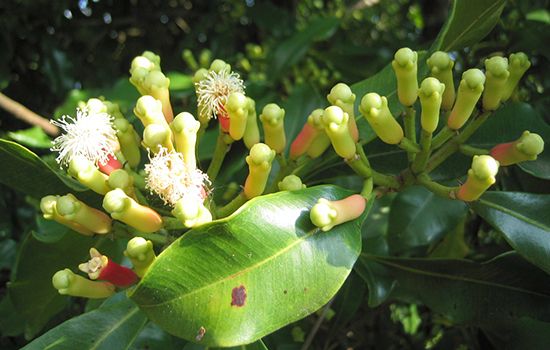Eugenia
Our editors will review what you’ve submitted and determine whether to revise the article.
- Related Topics:
- clove
- Myrtaceae
- Eugenia paniculata
- Surinam cherry
- Syzygium
Eugenia, large genus of chiefly tropical shrubs and trees of the myrtle family (Myrtaceae). The edible fruits of many species are commonly made into jam or jelly, and many species of Eugenia yield high-grade lumber. A number are widely used in the tropics and subtropics as ornamentals.
Physical description
Members of the genus Eugenia are mostly evergreen plants. The aromatic, glossy leaves are borne oppositely along the stems and are usually simple with entire margins. The flowers are solitary or in small clusters and produce berry fruits.
Major species
One of the most well-known species is the Surinam, or Brazilian, cherry (Eugenia uniflora), native to eastern South America. The plant is often grown as a privacy hedge and for its edible fruits, which range in flavour from tart to sweet. The rainforest plum (E. candolleana) and uvaia, or uvalha (E. pyriformis), both of Brazil, are also sometimes cultivated for use in landscaping and for their edible fruits. Cedar Bay cherry (E. reinwardtiana), of Queensland, Australia, is similarly cultivated and has sweet fruits that are eaten fresh or used in drinks or candies.

Some Asian species, formerly considered part of the genus, are now listed under Syzygium, including, notably, the clove tree (Syzygium aromaticum, formerly E. caryophyllata). The tree occurs in the West Indies and Indonesia and produces flowers that are removed as buds, dried, and sometimes processed to yield clove oil. The whole clove and its extract are used in flavouring; the oil is also used medicinally (see clove). The bark of S. cymosa (formerly E. cymosa) of Indonesia is the source of a black dye.
















